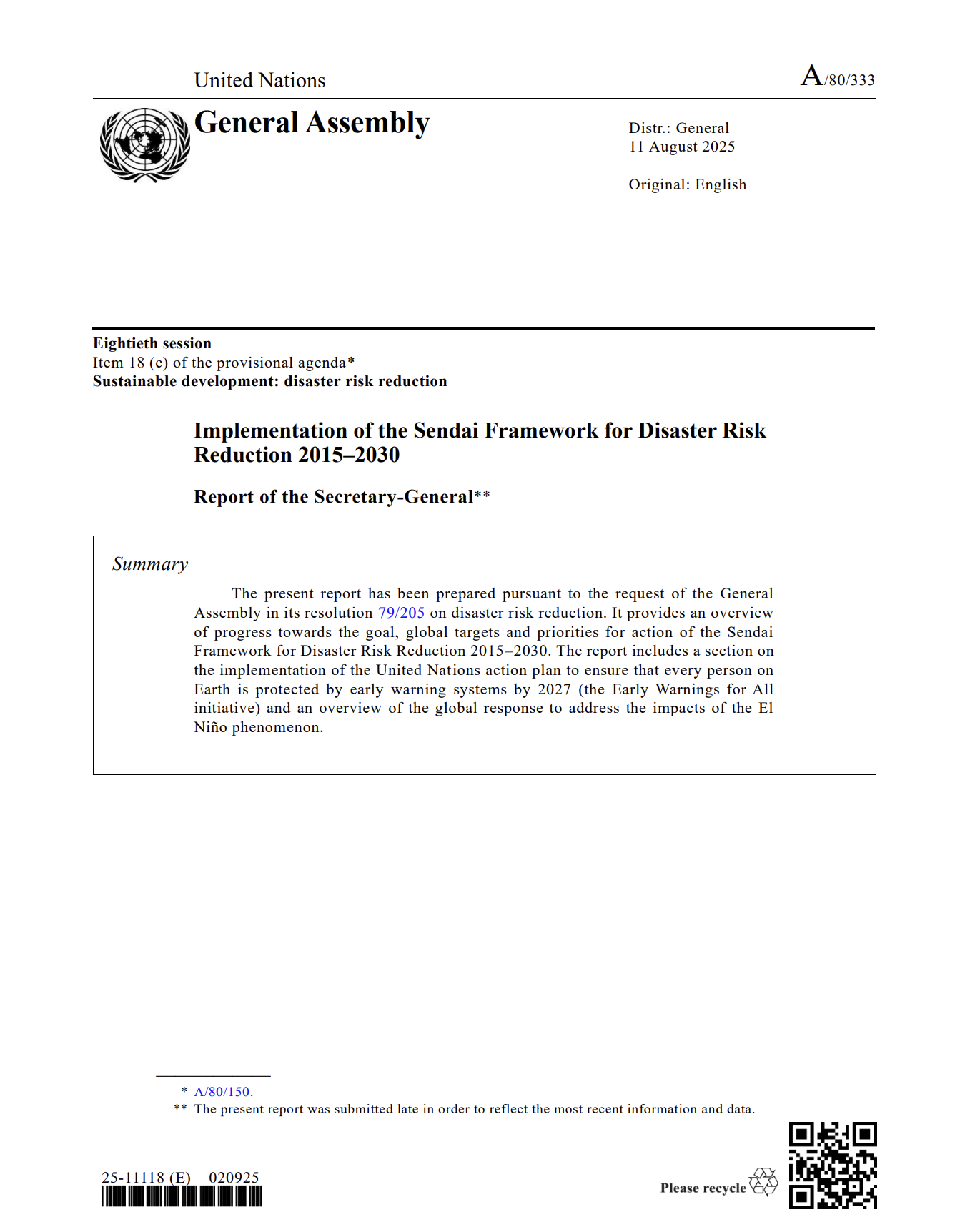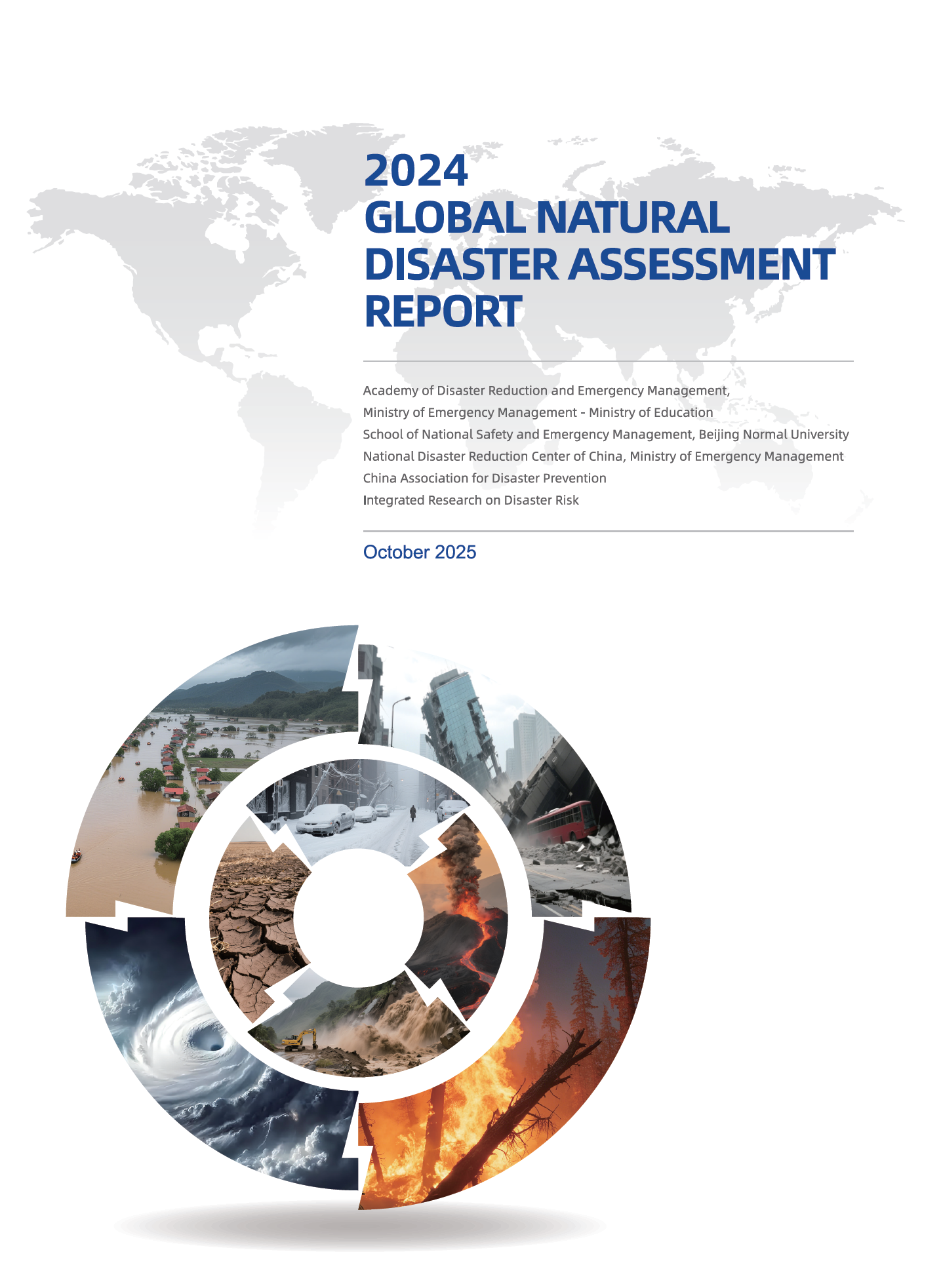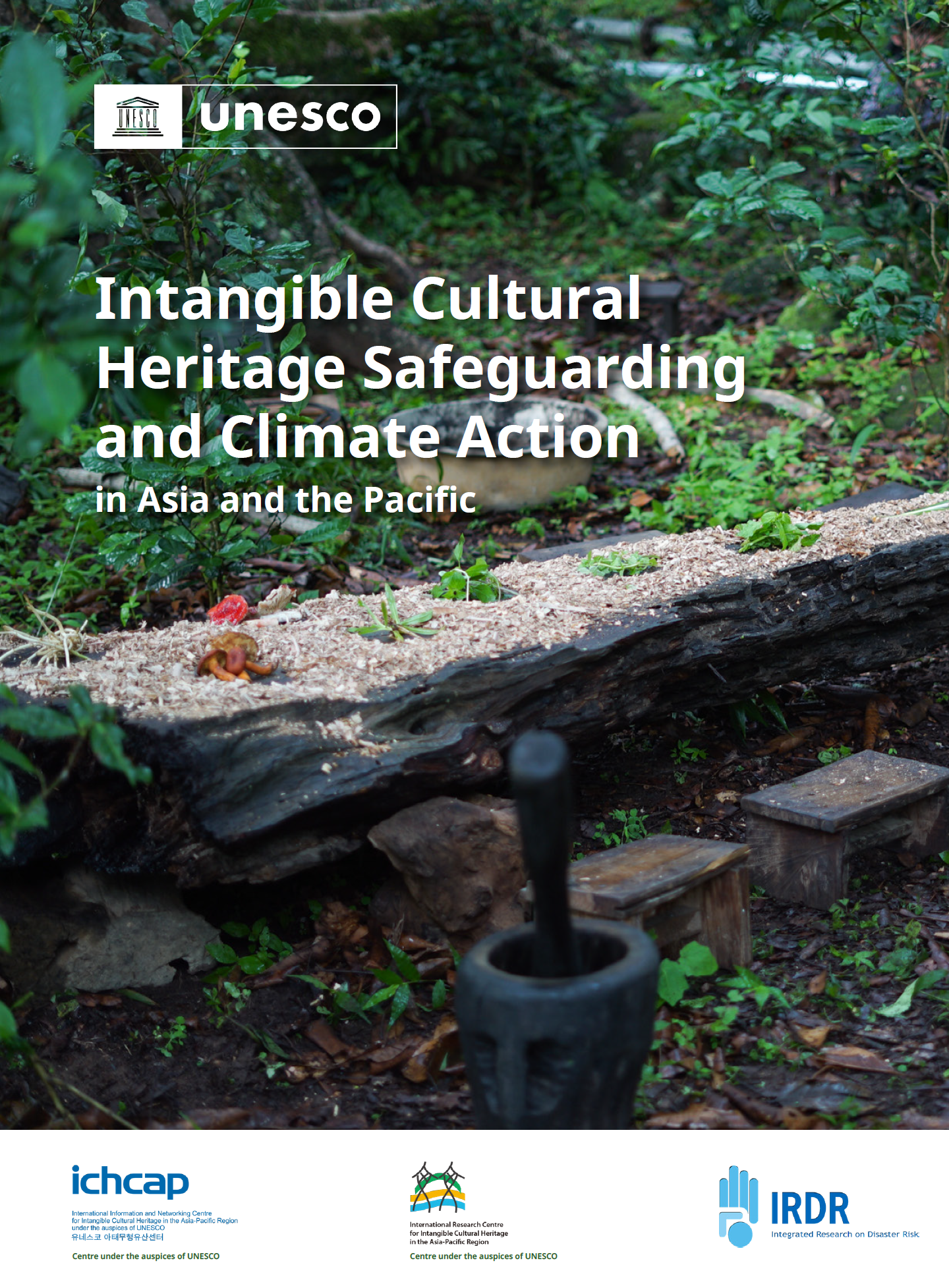Orginial source and download for the document: https://www.preventionweb.net/publication/un-resolutions-and-reports/implementation-sendai-framework-disaster-risk-reduction-2015
The Secretary-General’s report on the implementation of the Sendai Framework for Disaster Risk Reduction 2015–2030 provides an overview of progress made toward reducing disaster risk and strengthening resilience worldwide. It outlines current global disaster trends, highlighting the increasingly systemic and interconnected nature of risks, exacerbated by climate change, biodiversity loss, and socioeconomic inequalities. While significant advances have been achieved—such as halving disaster mortality, expanding national disaster risk reduction strategies, and more than doubling coverage of multi-hazard early warning systems—the report also stresses that disaster impacts and economic losses continue to rise, threatening sustainable development gains. It underscores the urgent need to shift from reactive crisis response to proactive, prevention-focused approaches that place people and ecosystems at the center of development efforts.
The report also reviews outcomes of global and regional platforms, progress across the four Sendai priorities, and the status of initiatives such as Early Warnings for All. It points to promising practices, including greater integration of disaster risk reduction into national policies, use of innovative technologies, and strengthened regional and cross-sectoral cooperation. However, it emphasizes persistent challenges such as inadequate financing, data gaps, limited inclusivity, and escalating disaster displacement. The Secretary-General calls for accelerated investment, stronger governance, and enhanced multilateral cooperation to address compounding risks, ensure no one is left behind, and build resilience in line with the 2030 Agenda for Sustainable Development.






